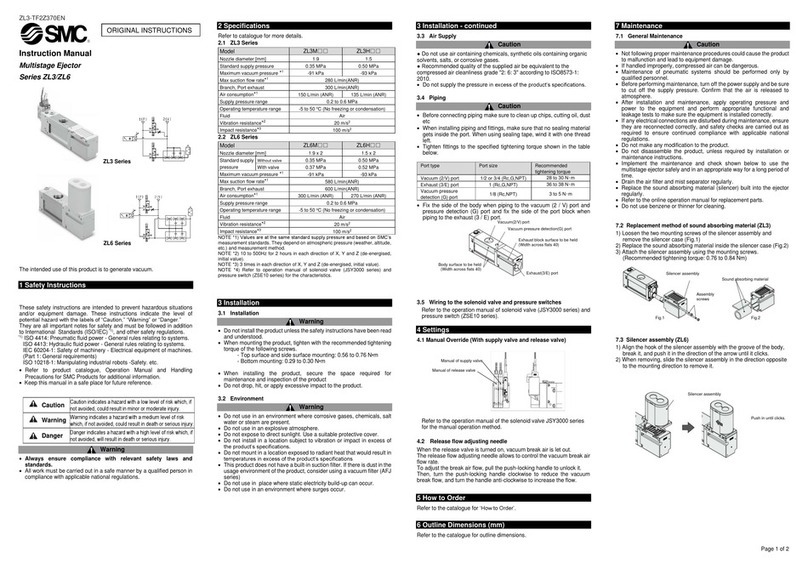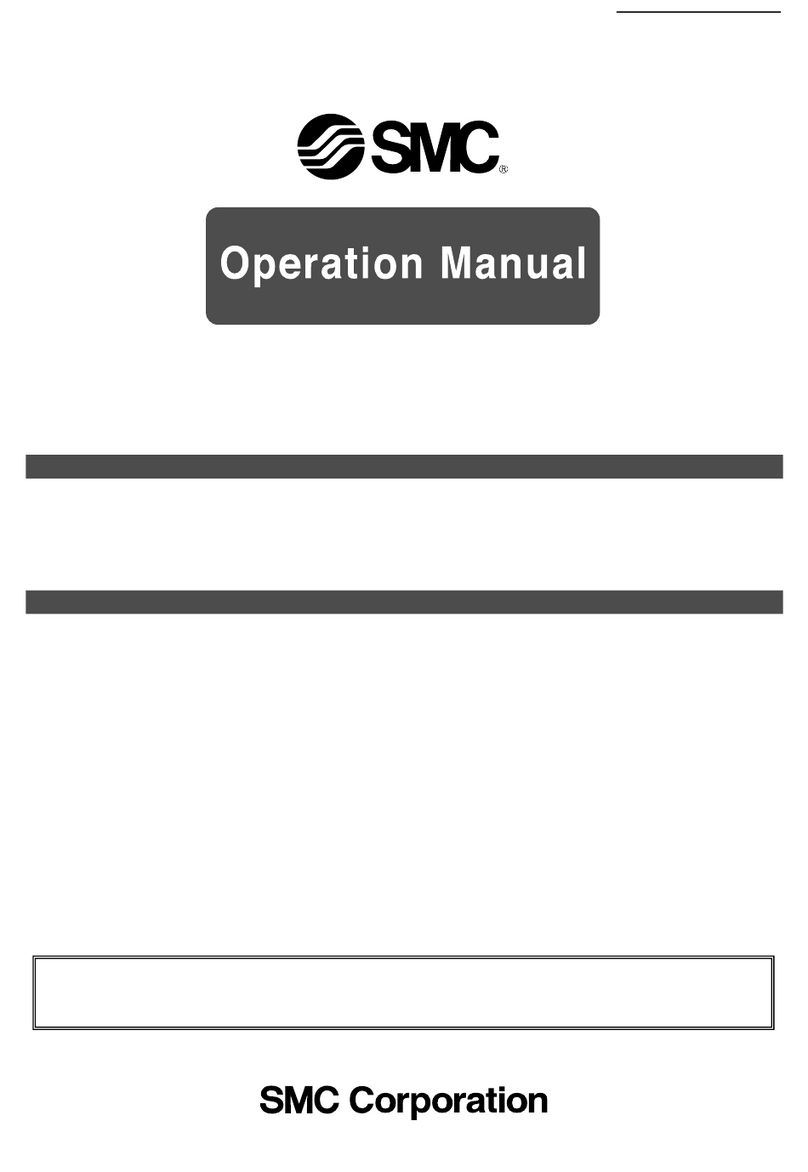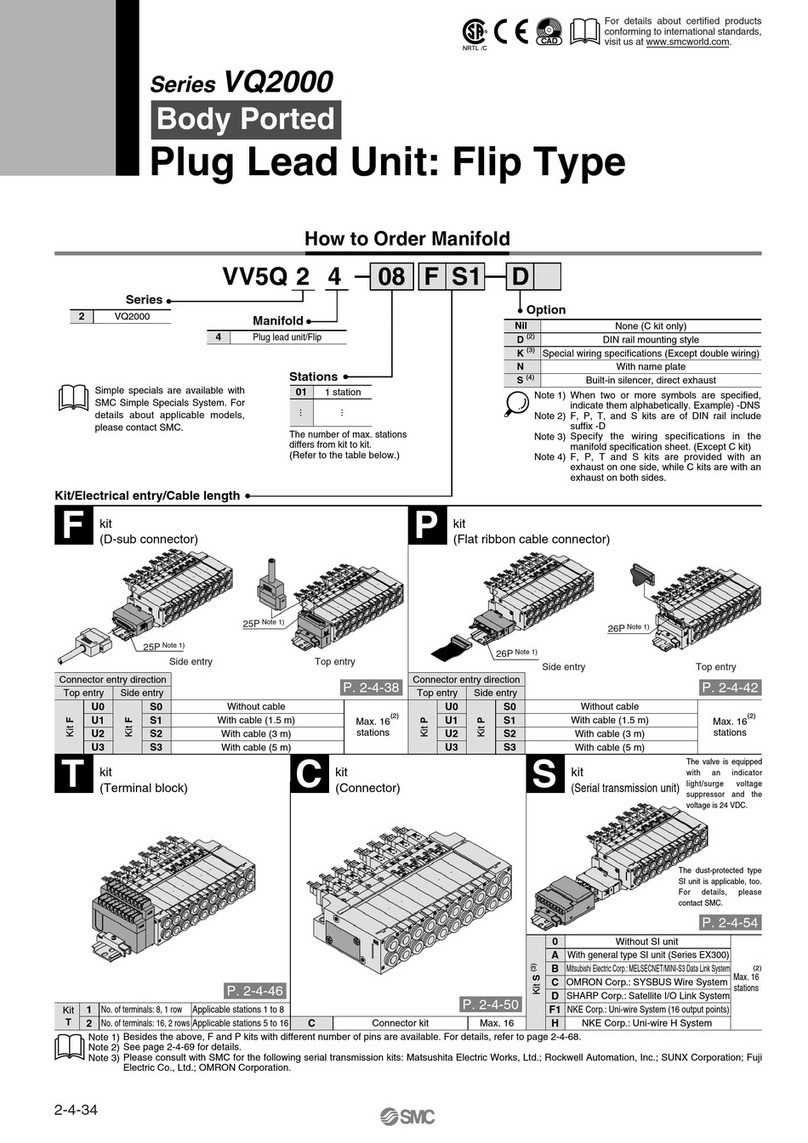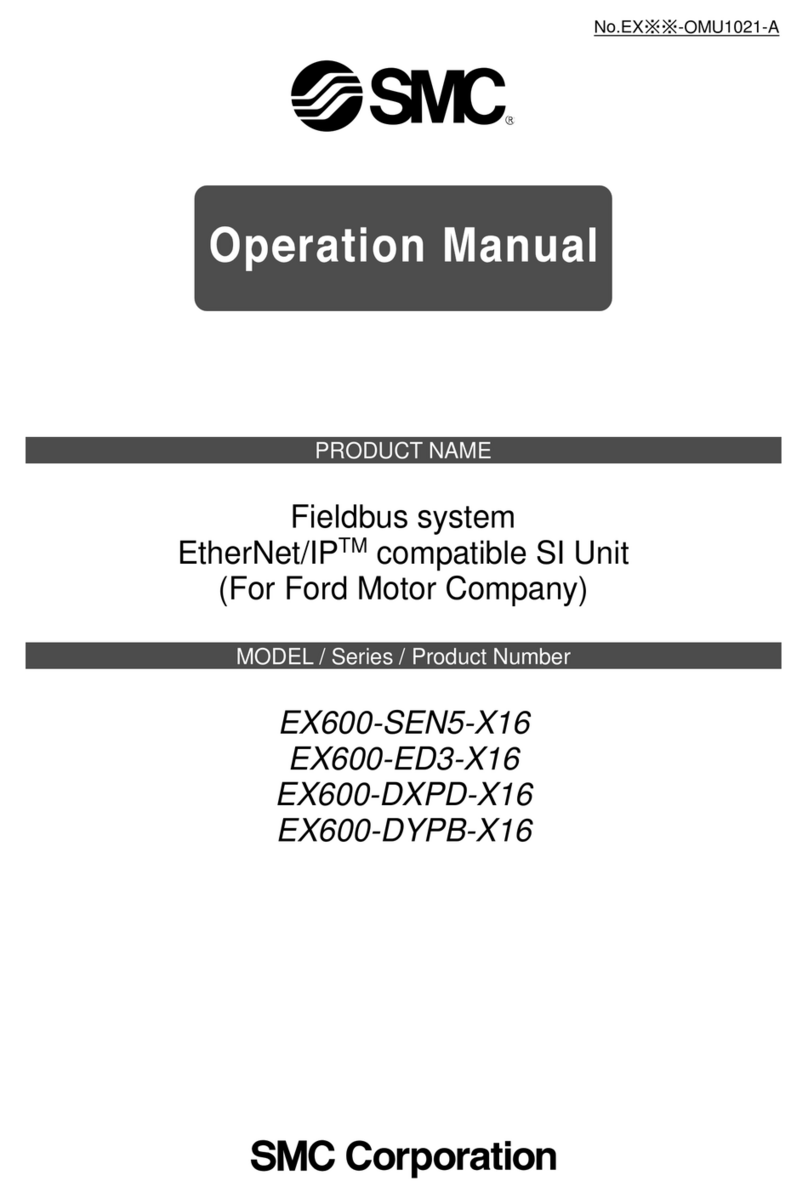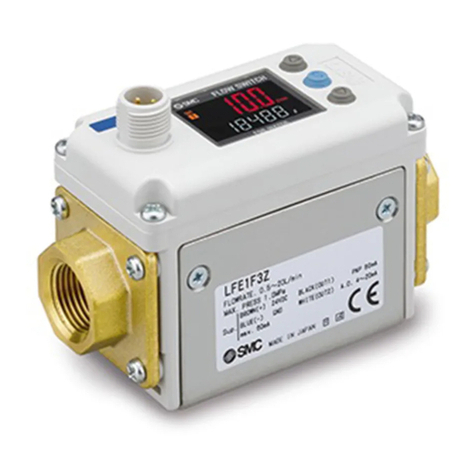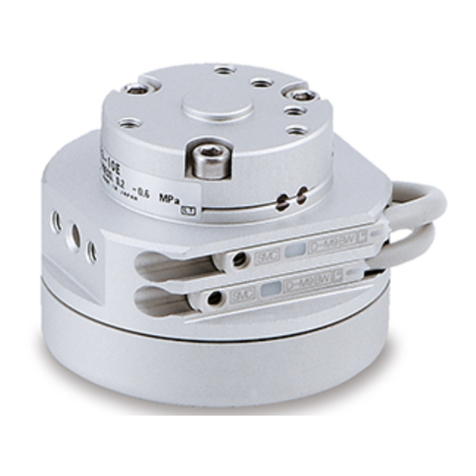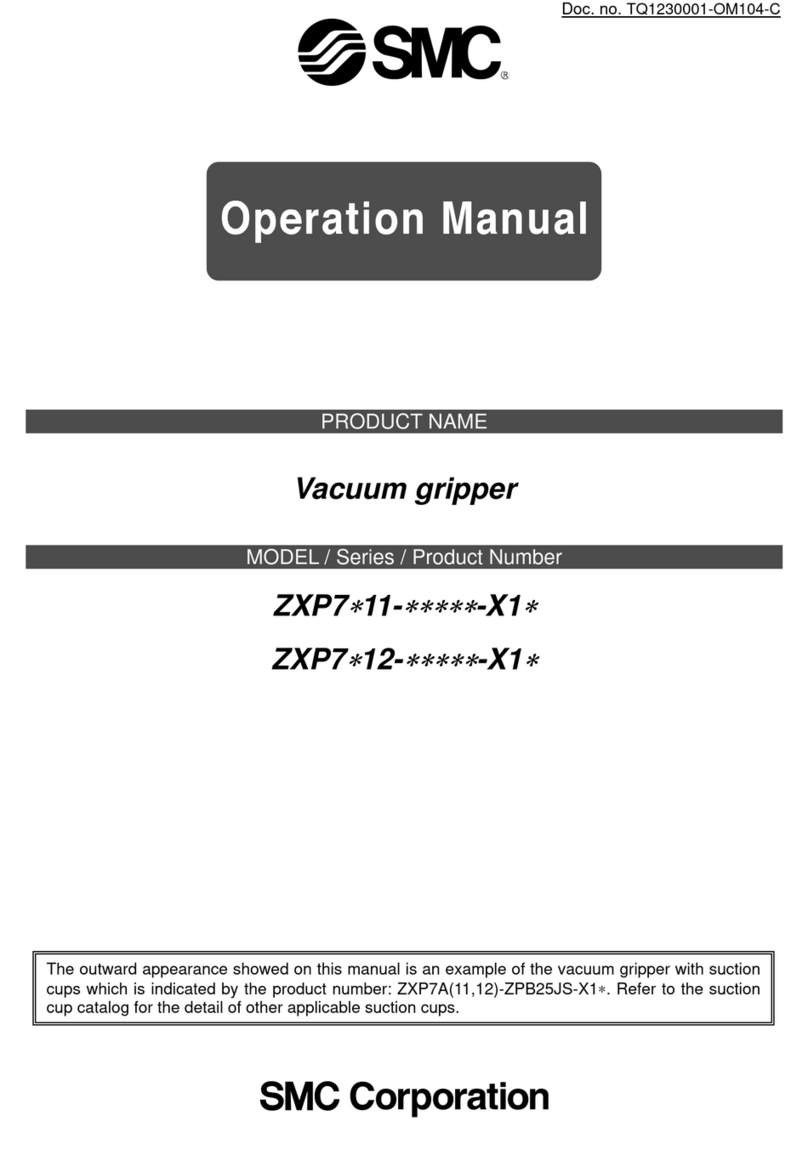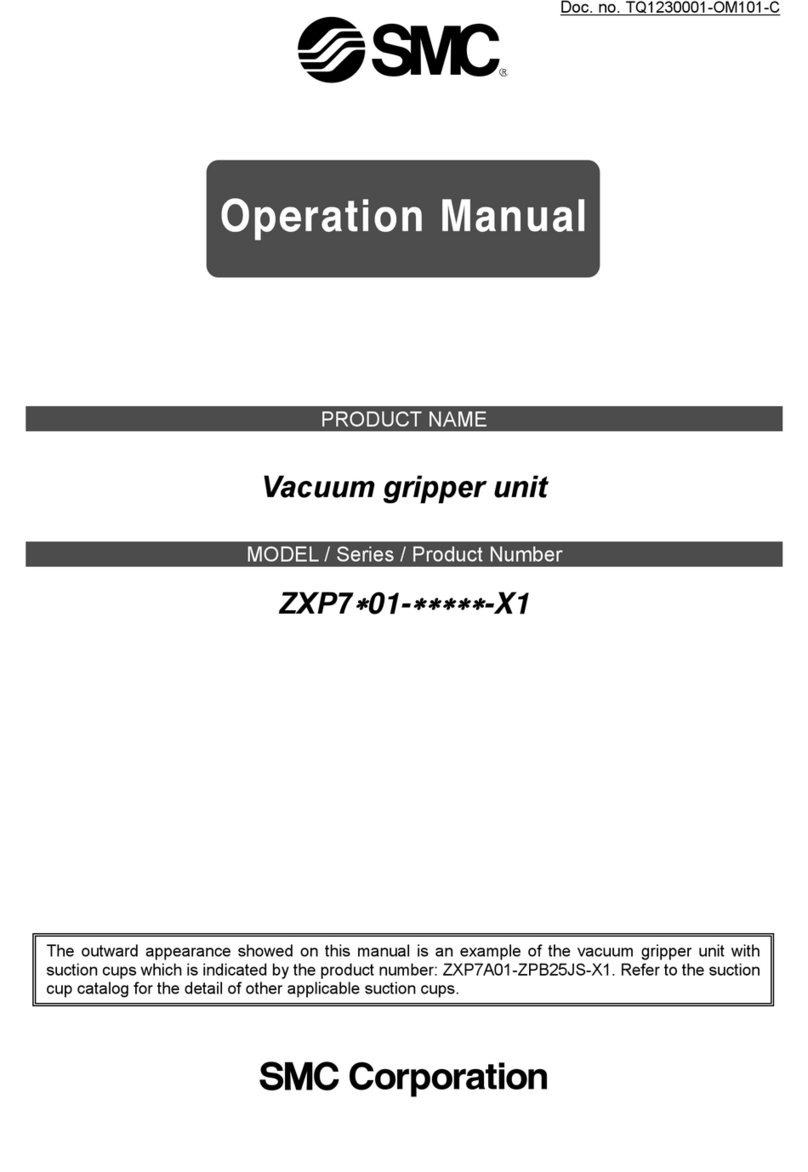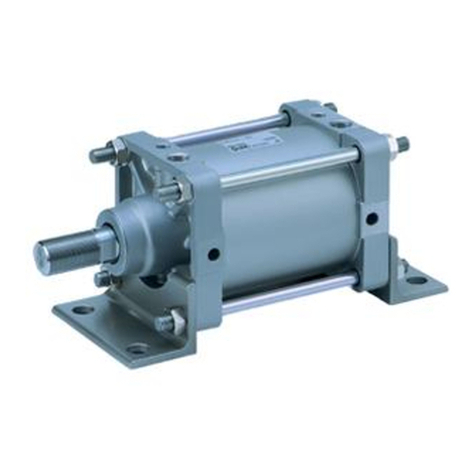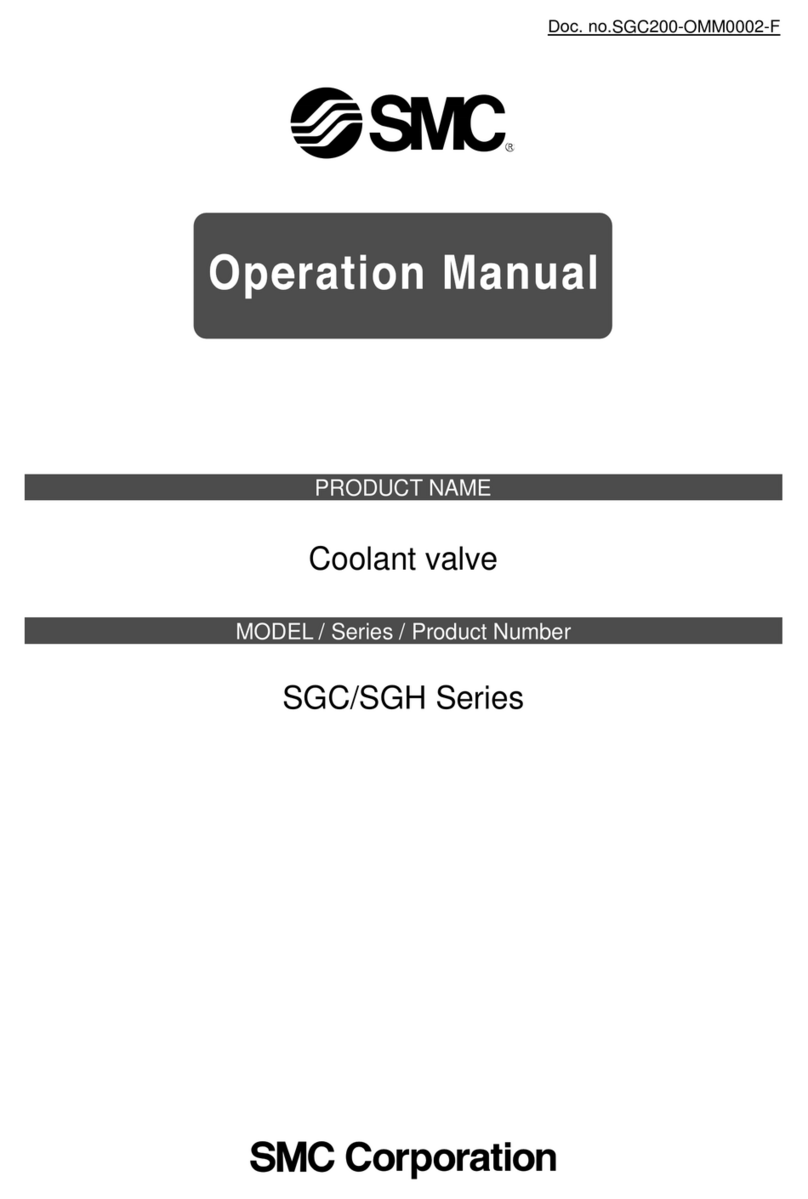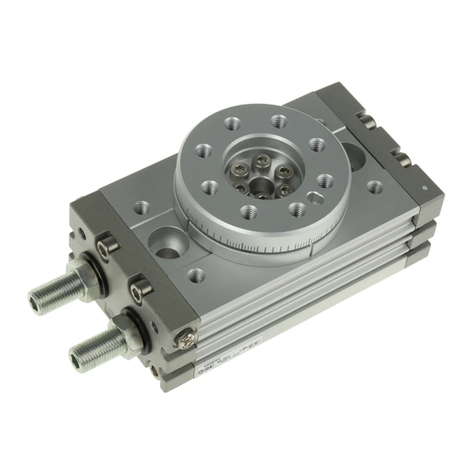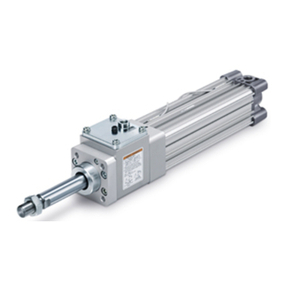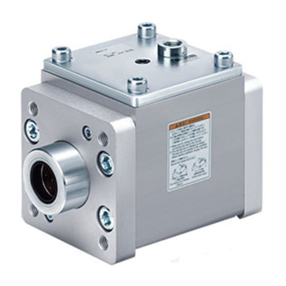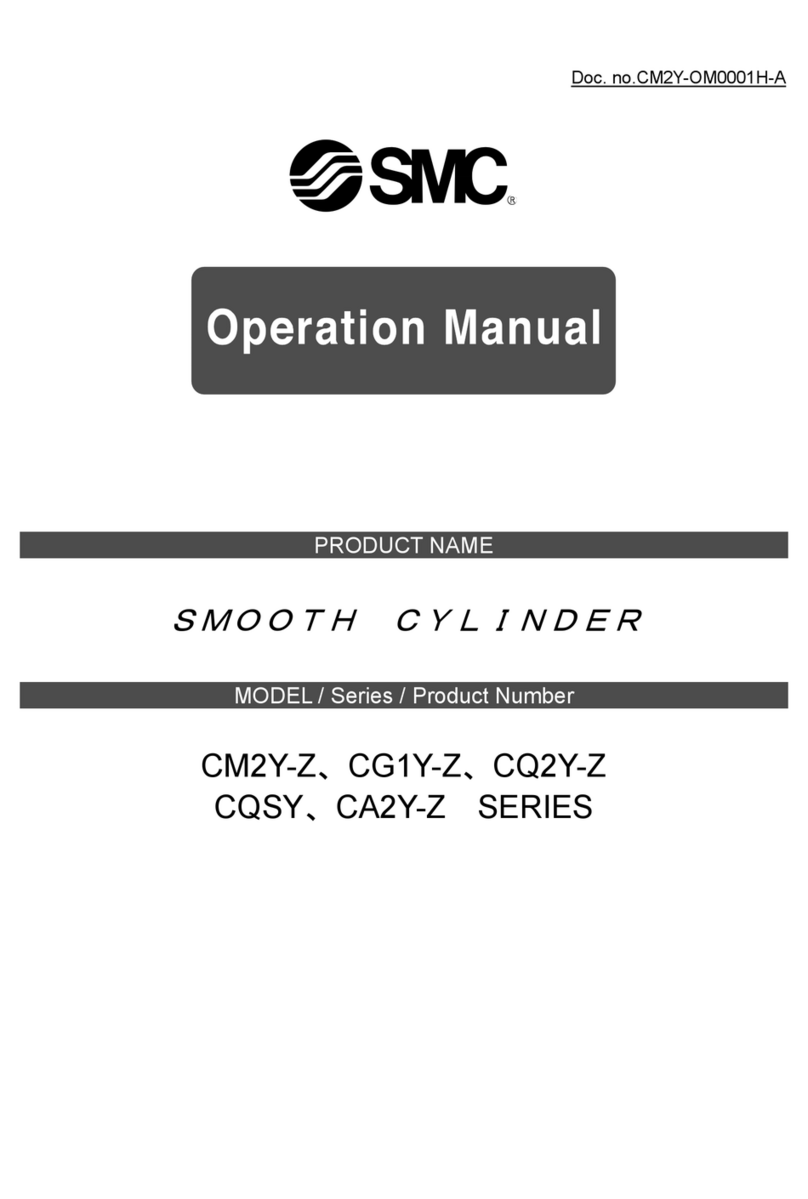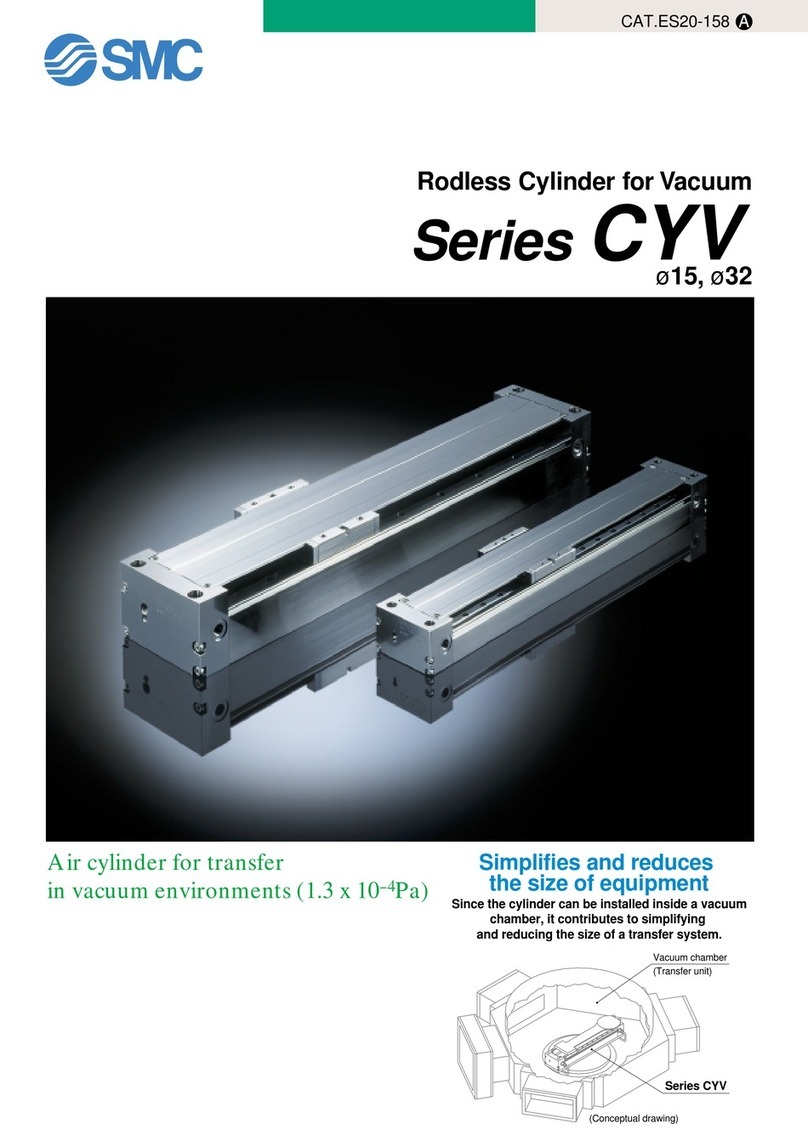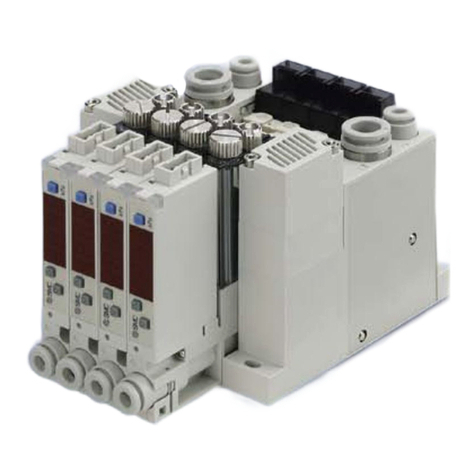
Mounting Bracket Part No.
Bore size (mm)
Foot (1)
Flange (2)
Single clevis
Double clevis (3)
CS1-F12
CS1-C12
CS1-D12
CS1-F14
CS1-C14
CS1-D14
CS1-F16
CS1-C16
CS1-D16
Accessory
Mounting bracket
—
Standard equipment
Option
Clevis pin
Rod end nut
Single knuckle joint
Double knuckle joint (With pin)
With rod boot
—————
Basic style Foot style
Rod side style
Flange side style
(kg)
Bore size (mm)
Basic style
Foot style
Flange style
Single clevis style
Single knuckle joint
Double knuckle joint (With pin)
Rod end nut
125
Construction Principle
Basic weight············ 40.19 (Foot style, ø140)
Additional weight ···· 1.96/100 stroke
Cylinder stroke ······· 100 stroke
40.19 + 1.96 x 100/100 = 42.15 kg
Spring locking (Exhaust lock)
The spring force which acts upon the taper ring is
magnified by a wedge effect, and is conveyed to all
of the numerous steel balls which are arranged in
two circles. These act on the brake shoe holder and
brake, which locks the piston rod by tightening
against it with a large force.
Unlocking is accomplished when air pressure is
supplied to the unlocking port. The release piston
and taper ring oppose the spring force, moving to
the right side, and the ball retainer strikes the cover
section A. The braking force is released as the steel
balls are removed from the taper ring by the ball
retainer.
Locked state Unlocked state
140 160
14.40
28.79
(30.26)
30.42
(31.89)
31.47
(32.94)
31.86
(33.33)
32.32
(33.79)
32.92
(34.39)
1.77
(2.66)
0.91
1.37
0.16
20.20
37.67
(39.48)
40.19
(42.00)
42.67
(44.48)
41.96
(43.77)
42.71
(44.52)
43.40
(45.21)
1.96
(3.01)
1.16
1.81
0.16
30.60
55.31
(57.52)
58.11
(60.32)
61.70
(63.91)
60.80
(63.01)
61.65
(63.86)
62.71
(64.92)
2.39
(3.58)
1.56
2.48
0.23
Lock unit weight
Trunnion style
Double clevis style
(Including clevis pin
and cotter pin)
Brake shoe holder
Brake shoe
Release piston
Air pressure exhaust
Air pressure supply
Steel ball
Ball retainer
Taper ring
Brake spring
Calculation: (Example) CNSL140-100
Note 1) When ordering foot bracket, order 2 pieces per cylinder.
Note 2) ø125 to ø160 rod side flange styles use Series CS1 long stroke
flanges.
Note 3) Clevis pin, plain washer, and cotter pin are shipped together with
double clevis style.
Head side
flange style
Double clevis
style
Center trunnion
style
Single clevis
style
Additional weight per each
100 mm of stroke
Basic
weight
Accessory
bracket
Series CNS
Weight/( ): Denotes the values for steel tube.
125 140 160
CS1-L12 CS1-L14 CS1-L16
